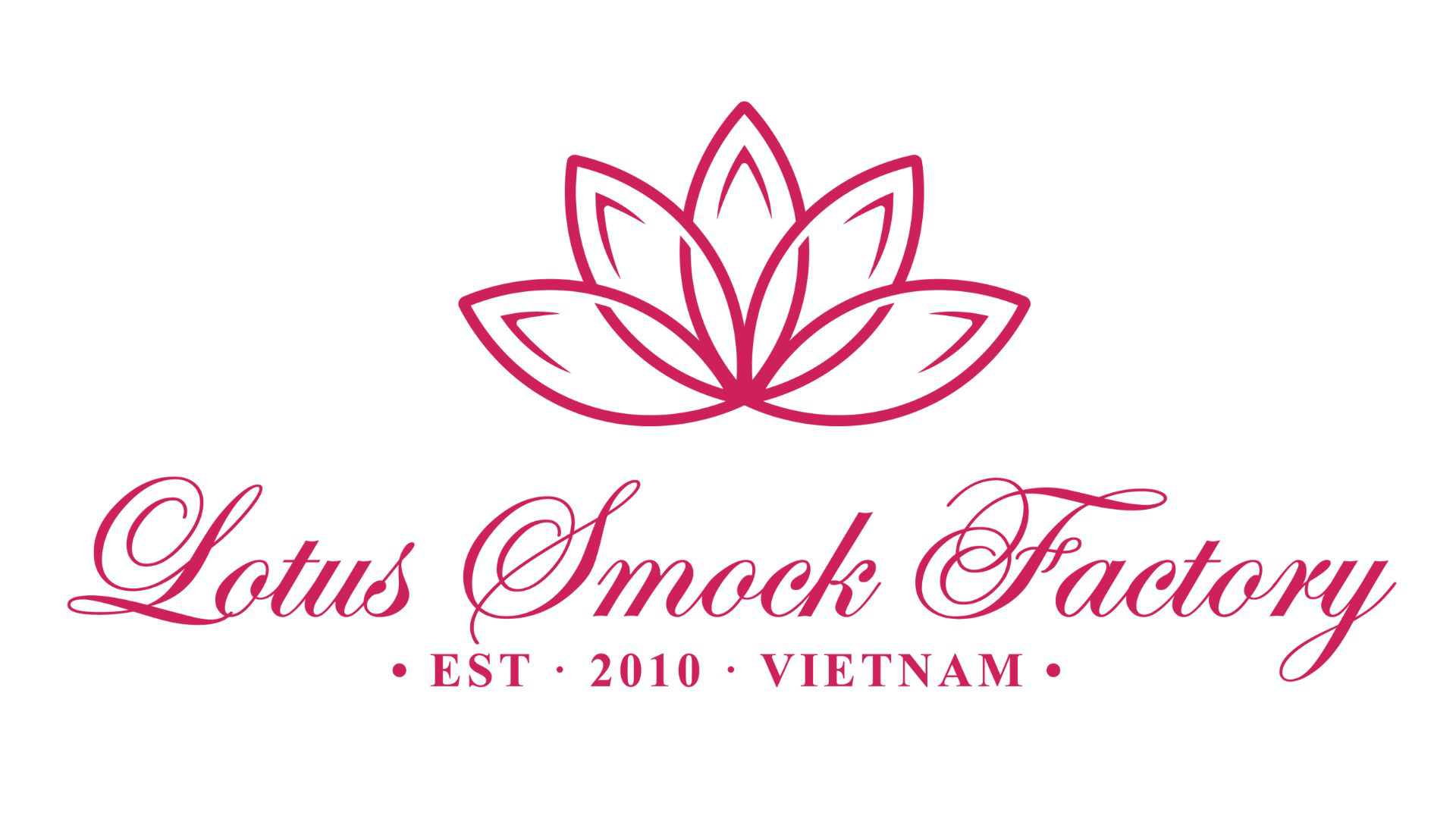Difference Between Sleepsuit And Babygrow: Guide For Parents and Boutique Owners
Are you confused about whether to buy a sleepsuit or a babygrow for your baby? Many parents mix up the terms because both describe one-piece baby garments that cover arms and legs, often with poppers or zips. The primary difference between sleepsuit and babygrow mainly comes down to regional naming conventions, intended use, and subtle design details.
In this guide, you will learn how sleepsuits and babygrows compare to bodysuits and rompers, which fabrics to pick, and why boutiques should understand these terms for stocking baby clothing.
1. What Is a Sleepsuit?
A sleepsuit is a one-piece garment designed to cover a baby’s arms and legs, often including footed bottoms. Parents use sleepsuits primarily for nighttime sleep, but they are also suitable for daytime wear at home. These garments provide warmth and comfort while keeping babies fully covered. So, parents can easily and conveniently change diapers for their children.
Key Features:
- Poppers or a zip along the front or inseam for easy diaper changes.
- Footed or footless options, depending on the baby’s age and mobility.
- Soft, breathable fabrics such as cotton, organic cotton, velour, or fleece for colder months.
Usage Notes:
- Ideal for newborns and infants in the 0–12M range.
- Works well as part of a layered outfit for cooler climates.
Understanding the baby sleepsuit definition helps parents select the right baby sleepsuit clothing for comfort, temperature regulation, and ease of care.
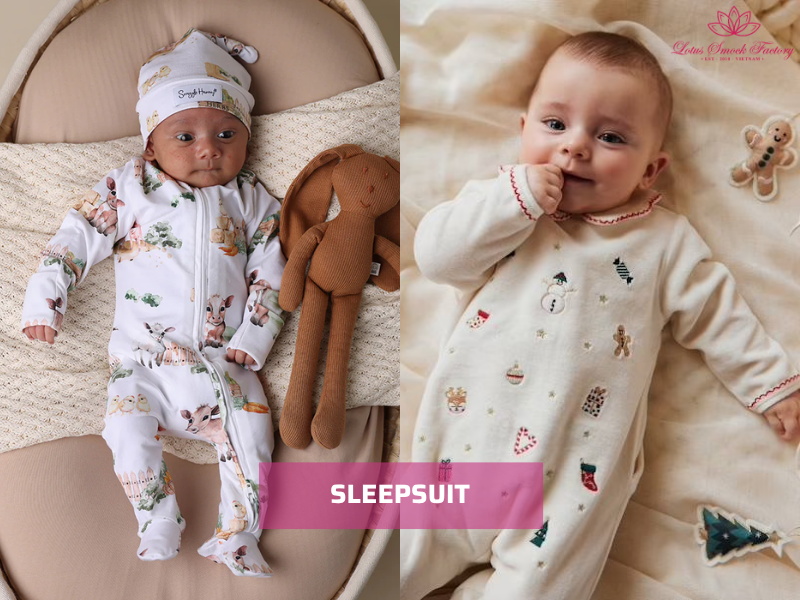
2. What Is a Babygrow?
A babygrow is a UK term originally trademarked by Marks & Spencer in the 1950s. It refers to a long-sleeved, all-in-one garment that covers a baby’s arms and legs, similar to a sleepsuit, with poppers running down the front for easy access.
The Differences:
- In retail, babygrows can refer to daytime wear, whereas sleepsuits are often marketed for nighttime.
- Some parents use the terms interchangeably, but regional preferences apply.
Regional Notes:
- UK & Ireland: “babygrow” is commonly used.
- US: Parents typically say “sleepers” or “onesies.”
Babygrows come in cotton, organic fabrics, and fleece for colder seasons. When parents know the babygrow meaning and differences in usage, they can choose suitable babygrow baby clothes for comfort, layering, and age-appropriate wear.
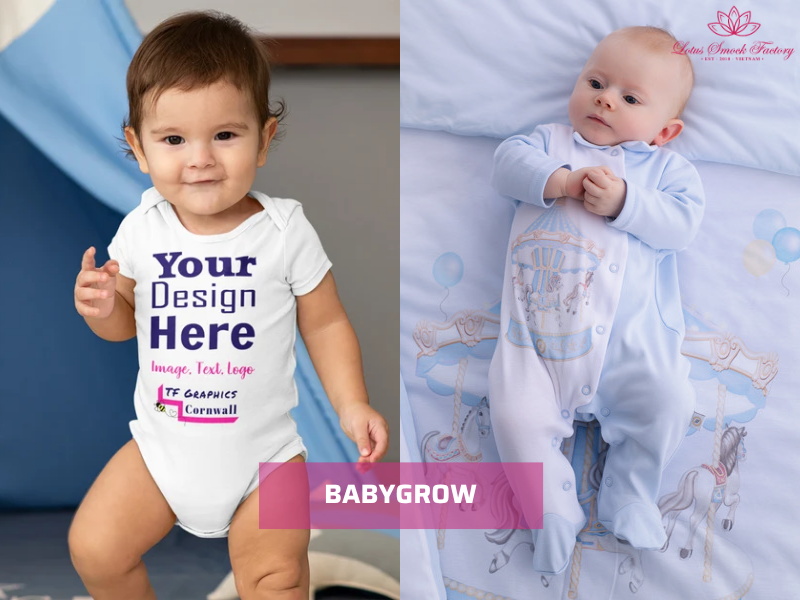
3. What Is the Difference Between Sleepsuit and Babygrow?
Both sleepsuits and babygrows are one-piece baby garments designed to cover the arms and legs, which provide warmth and comfort. The difference between sleepsuit and babygrow mostly lies in regional terminology and brand history. Parents in the UK and Ireland commonly use “babygrow,” while in the US, the term “sleeper” or “sleepsuit” is more frequent.
Moreover, these garments are often confused with bodysuits (vests) or rompers, which provide different coverage and use cases. Bodysuits only cover the torso, while rompers are usually designed for play or outdoor wear.
You can follow the comparison table below to clear:
| Feature | Sleepsuit | Babygrow | Bodysuit | Romper |
| Coverage | Arms, legs, feet | Arms, legs, feet | Torso only | Arms + legs |
| Best Use | Sleep/night | Day + night | Layering | Play/outdoor |
| Fastening | Poppers/zip | Poppers | Poppers | Buttons/zips |
| Fabrics | Cotton, fleece | Cotton | Cotton | Mixed |
=>>> Find out how to check your baby’s temperature in winter and summer here: [How Do You Dress a Newborn in Summer?] and [How Do You Dress a Newborn in Winter?].
4. Fabrics and Safety Features in Sleepsuits and Babygrows
The right fabrics and safety features are key when parents buy sleepsuits and babygrows for their baby. Breathable fabrics like cotton voile and organic cotton will help regulate body temperature and reduce the risk of overheating. These materials are soft on delicate skin and suitable for year-round use.
For colder months, seasonal fabrics such as fleece and velour provide extra warmth during nighttime or winter outings. Footed styles keep little feet covered and warm, while footless designs allow babies to move freely, ideal for crawling and toddlers learning to walk.
Parents can consider safety features, including:
- Flame-retardant fabrics are commonly used in the US for added safety in nightwear.
- Nickel-free poppers prevent skin irritation or allergic reactions.
- Smooth seams and secure stitching minimize the risk of entanglement.
When parents choose high-quality materials and verified safety features, it helps maintain breathable babywear standards. Therefore, parents will feel more secure and safe when their children sleep.
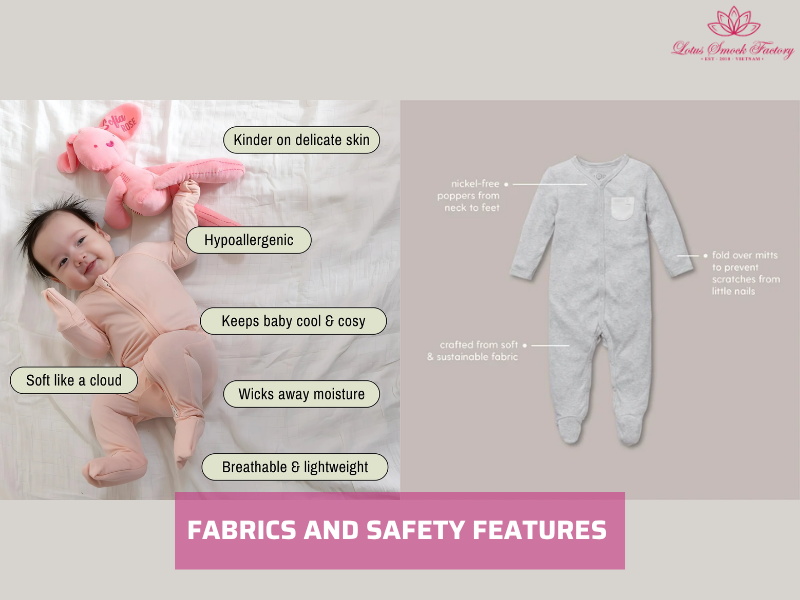
5. When to Choose Sleepsuits vs Babygrows for Your Baby
The choice between sleepsuits and babygrows depends on the time of day, season, and your baby’s age. Sleepsuits are ideal for nighttime wear and colder weather, keeping babies warm and comfortable while they sleep. They often come footed, which adds extra warmth for newborns and infants during winter months.
Babygrows, on the other hand, are versatile enough for both daytime and nighttime use. They allow freedom of movement for babies during play while still providing full coverage. Many parents find them convenient for layering over bodysuits or rompers in cooler climates or transitional seasons.
Practical Tips for Parents:
- Pack both sleepsuits and babygrows in your hospital bag to cover day and night needs.
- Use sleepsuits for the newborn stage (0–3M) and gradually transition to rompers or bodysuits as your baby grows and starts moving more.
- Choose fabrics appropriate for the season, such as cotton or organic cotton for breathability and fleece or velour for warmth.
By understanding when to use best newborn sleepsuits versus newborn babygrows, parents can keep their babies comfortable, safe, and stylish.
=>>> Looking for cozy yet stylish options for your boutique? Check out our [Top 10+ Smocked Pyjamas Wholesale Models for Your Boutique] to find the perfect seasonal selection for infants.
6. Why Baby Fashion Trends Include Smocked Outfits Alongside Sleepsuits
In baby fashion, sleepsuits and babygrows are considered wardrobe essentials. They provide comfort, warmth, and practicality for daily use, allowing parents to easily dress newborns for sleep or casual home wear.
However, smocked dresses and rompers have become a key trend in boutique baby fashion. These outfits are:
- Heirloom-quality: Hand-smocked details and delicate embroidery make them keepsakes for special occasions.
- Photo-ready: Perfect for family photos, holidays, and milestone celebrations.
- Giftable: Premium smocked outfits are popular as presents for newborns or special events.
Parents often combine basics with smocked clothing to cover both daily practicality and special moments.
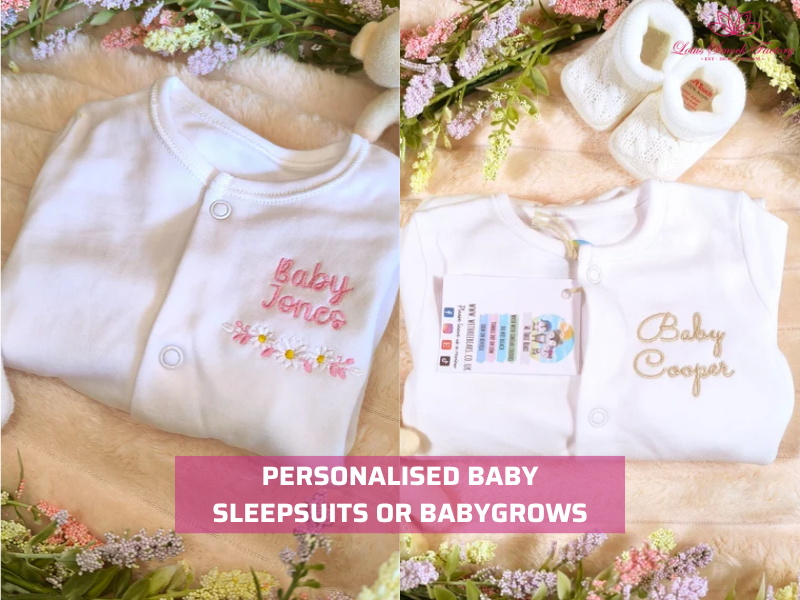
7. Guide for Shop Owners / Boutique Buyers
For boutique owners, stocking both sleepsuits and premium smocked outfits is a strategic way to appeal to a broader customer base. Basics like sleepsuits cater to parents seeking daily comfort and practicality, while hand-smocked dresses, rompers, and seasonal outfits. These products will attract customers as parents looking for premium, heirloom-quality pieces for photos, holidays, and gifts.
7.1. Why Boutique Owners Should Stock These Items
Here are the reasons why boutique/shop owners should stock smocked sleepsuits and babygrows:
- Seasonal Relevance: Smocked outfits sell strongly during holidays and special occasions, increasing revenue during peak periods.
- Upselling Opportunities: Pairing basics with smocked dresses allows boutiques to increase average order value through bundles or coordinated sibling sets.
- Customer Loyalty: Offering high-quality, customizable items builds repeat customers who value exclusivity and personalization.
- Differentiation: Handmade smocked clothing sets boutiques apart from mass-market retailers and fast-fashion stores.
- Social Media Appeal: Photogenic designs encourage shareable content, boosting boutique visibility online.
7.2 Lotus Smock – Wholesale Smocked Clothing Factory, High Quality Hand Smocked Dresses
Boutique owners can also explore these products to stock high-quality, handcrafted baby clothing from Lotus Smock. Lotus Smock specializes in hand-smocked outfits, pyjamas, and seasonal collections with:
- Low MOQs (30 pcs per style) for boutique flexibility
- Free 2D design mockups to preview items before ordering
- Custom embroidery, monograms, and matching sibling sets
- 30–35 day production turnaround + 5–7 day FedEx shipping
Whether you are preparing for summer, winter, or holiday collections, Lotus Smock provides premium, ready-to-sell options that combine craftsmanship, versatility, and boutique appeal.
Boutiques that stock these items offer parents both practical and premium options, increasing sales and establishing themselves as a trusted destination for baby clothing.
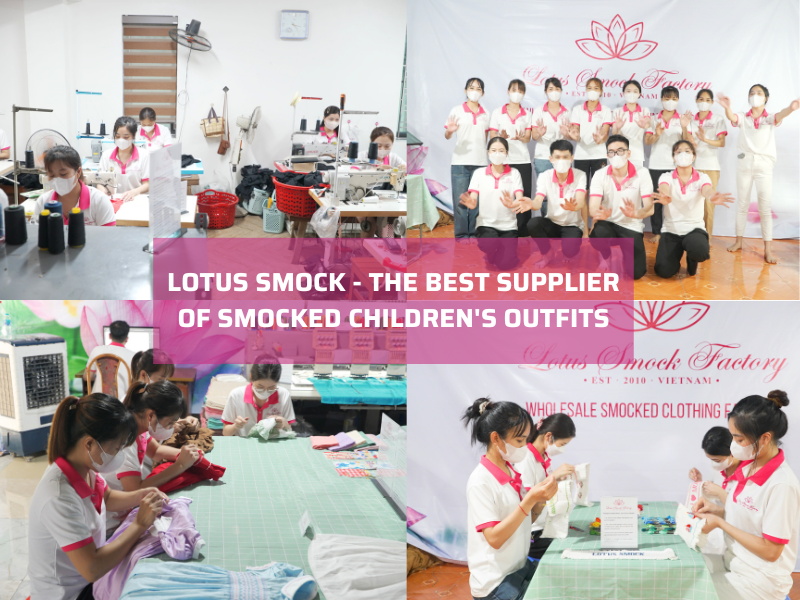
Contact Lotus Smock to Start Your Halloween Order:
- Facebook: facebook.com/lotussmockfactory
- WhatsApp: +84 83 333 3498
- Youtube: youtube.com/@LotusSmockFactory
Learn more about Lotus Smock – Wholesale Smocked Clothing Factory, High Quality Hand Smocked Dresses HERE.
8. FAQs
8.1. Q1: Are sleepsuits and babygrows the same thing?
Yes, sleepsuits and babygrows are very similar. Both are one-piece baby garments that cover arms and legs, often with poppers or zips for easy diaper changes. The main difference lies in regional terminology and minor style variations: “babygrow” is commonly used in the UK, while “sleepsuit” or “sleeper” is used in the US.
8.2. Q2: What is the difference between a sleepsuit and a bodysuit?
A sleepsuit covers arms, legs, and sometimes feet, making it suitable for sleep or full-day comfort. A bodysuit (or vest) only covers the torso and snaps at the crotch, intended for layering under other clothes or as a base layer in warmer weather.
8.3. Q3: Can babies wear sleepsuits all day?
Yes, babies can wear sleepsuits for daytime comfort, especially newborns, as long as the fabric is breathable and the weather is suitable. Footless styles may be preferred for active or crawling babies to allow mobility.
8.4. Q4: What age range are babygrows for?
Babygrows are typically designed for 0–24 months, covering the newborn and toddler stages. Boutique lines may extend sizes up to 3–4 years for matching sibling or family sets.
8.5. Q5: Where can I buy premium alternatives?
Parents and boutique owners can explore premium, hand-smocked alternatives at suppliers like Lotus Smock. They offer custom embroidery, monograms, seasonal smocked outfits, and sibling sets with low MOQs, free 2D mockups, and global shipping.
These options provide heirloom-quality clothing beyond basic sleepsuits and babygrows, suitable for gifting, special occasions, and boutique collections.
9. Final Words
Knowing the difference between sleepsuit and romper allows parents to choose clothing that matches their baby’s age, activity, and weather. Sleepsuits provide warmth and coverage for sleep or cooler conditions, while rompers offer freedom of movement for playtime and daytime outings.
Boutiques can use this knowledge to stock a balanced selection, educate customers, and optimize sales. By combining practical basics with seasonal or premium items, you give parents more options and ensure comfort and style for babies.
